Log in or create new account to save this product to your wishlist.
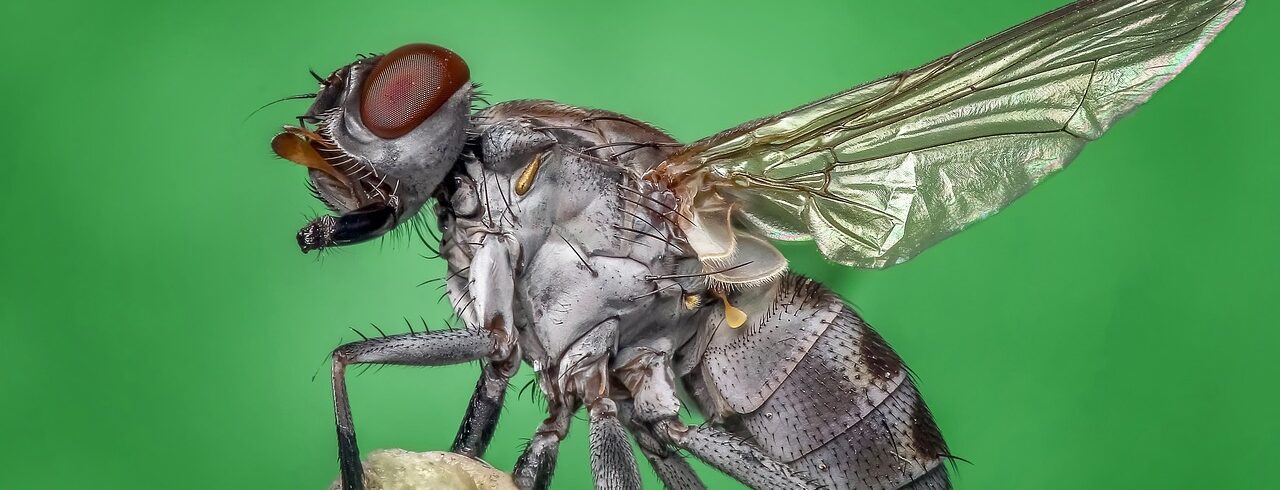
How to get rid of flies: the best tips and tricks!
Having flies buzzing around the house is not only annoying, it can pose a significant health hazard. Find out how to get rid of flies without resorting to harsh chemicals and poisons.
🌱 All important maintenance moments for your lawn during the year. Leave your email and we will send you the lawn calendar for free.
Enter your email
Receive the lawn calendar in the mail
Enjoy a green lawn all year round!

- Order by 2PM = shipped today
- 250.000+ satisfied customers!
- 60 day satisfaction guarantee
Flies around the home are annoying but also unhygienic. So, if you discover an infestation of flies, you’ll want the best tips and tricks for catching and killing them. But how do you get rid of flies for good?
- The curse of the house fly
- When are flies active?
- Are flies dangerous?
- How does a fly eat?
- How to scare away and fight flies — 6 Top Tips
- The life cycle of a house fly
- What types of flies are there?
- How do you prevent a fly infestation?
- FAQs
Many fly species could infiltrate your home and garden, so find out how to tackle these annoying insects quickly and effectively.
In this article, we explore how to get rid of flies (and how to keep them away!)
Ready? Let’s go!
The curse of the house fly
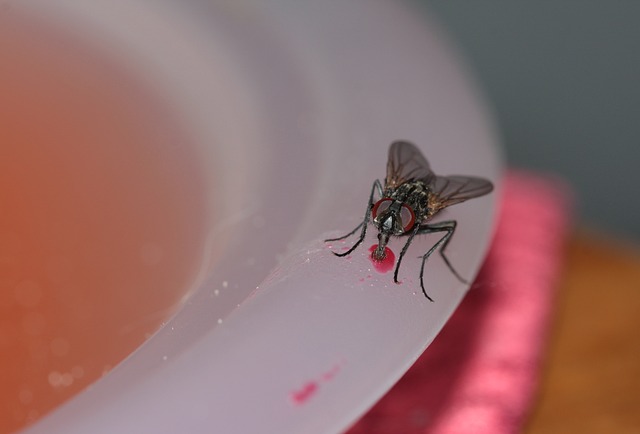
All homes occasionally get flies buzzing around. Open a window when it’s warm, and they find their way in. Or leave a door ajar for ventilation, and you’ll find the little critters buzzing around your head in the middle of the night.
Gross.
But while fly infestations are annoying, they’re usually pretty much benign.
However:
It is essential to tackle a fly problem before they crawl over your food because they quickly spread disease. So, how to get rid of flies?
Read on.
When are flies active?
The worst time of year for flies is usually during the summer when the temperatures are high. This is when the insects are most actively seeking out food.
However, flies are also active during colder periods when they seek shelter. They’ll find any available openings to enter your warm home — not just windows; they’ll seek out cracks and holes in the wall, including between your roof tiles.
Sometimes, flies are attracted to light sources or strong smells, especially the aroma of pet food.
Are flies dangerous?
While flies don’t typically bite or sting, they can transmit infectious diseases that make you ill. They carry traces of fungi, viruses, and even worms. So, while the insect isn’t dangerous, their presence can be problematic.
Flies spread:
- Salmonella — a severe food poisoning condition leading to vomiting, diarrhoea, and dehydration
- E. coli — a nasty disease-causing diarrhoea, vomiting, stomach cramps, fever, and even blood in your stools
Flies transfer bacteria from rotting food, animal faeces, or anything else they find in your bin. So, you really don’t want flies anywhere near your food!
How does a fly eat?
Anyone who has seen the Jeff Goldblum remake of The Fly knows how flies consume solid food.
I’d put down your biscuits or skip this section if you have a weak stomach.
Basically, a housefly regurgitates digestive juices onto any solid food they plan to eat. This breaks down the food into smaller parts in a liquid form, which they drink through their proboscis.
So, even if a fly has only just landed on a piece of food, it’s likely they’ve already started the process, so to speak. They taste with their feet, after all!
Also, (sorry, this gets worse) flies are champion defecators because they survive on a liquid diet. Their digestive system works rapidly, meaning they poo a LOT. In fact, it’s believed that flies defecate each time they land — even if they intend to eat what they land on.
🤢
This means that they ruin food almost as soon as they touch it.
How to scare away and fight flies — 6 Top Tips
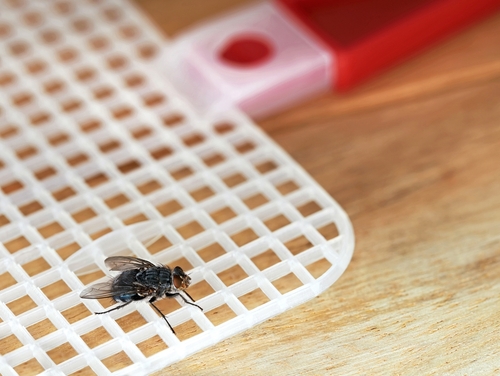
OK — it’s safe to start reading again!
Here are five ways to get rid of flies:
- Make a homemade trap
It’s pretty straightforward to build your own homemade fly trap. All you’ll need is:
- A plastic bottle
- Scissors
- Sticky tape
- Sweet syrup
- Vinegar
- Water
Here’s how:
- Cut off the top of the plastic bottle with scissors.
- Turn the top of the bottle upside down and push it into the bottom of the bottle. Make sure the top of the bottle is pointing down.
- Stick the top down with adhesive tape.
- Add a layer of honey or sugar to the bottom of the bottle.
- Add a layer of vinegar and water to the bottle. Optionally, you could add fruit or meat to the bottle (but it might smell if left too long).
- Place the fly trap where flies are likely to linger.
Maintain your fly trap regularly, cleaning it out at least once a week, and replacing the liquids.
Place the trap:
- Near a bin
- On a windowsill
- Near a compost heap
Alternatively, buy a ready-made fly trap.
2. Offer pleasant aromas
One of the best ways to catch flies is with aromas, such as overripe fruit.
But:
You can also discourage flies with pleasant aromas, such as:
- Cloves
- Basil
- Lavender
- Mint
- Citrus
And not so pleasant-smelling:
- Onion
- Vinegar
So, cut a lemon in half and stud cloves into the skin. Place the studded lemon around the kitchen or anywhere else you want to discourage flies.
Alternatively, cloves pushed into half an onion will do the job (as will an open bowl of vinegar), but it might also discourage you and your friends from congregating around the smell of raw onion.
Finally, a small bunch of lavender wherever you want to dissuade flies.
3. Fan flies away (or trick them with water)
Flies hate the cold airflow of an electric fan. So placing a fan by an open window can help discourage flies from entering.
Another top trick is to hang bags of water around the door or windows, which confuses flies by showing them their own reflection. Use a transparent bag, such as a sandwich or freezer bag.
The other classic way of killing flies is with a swatter or fly strip, attracting insects and glueing them to the strip.
4. Venus fly traps
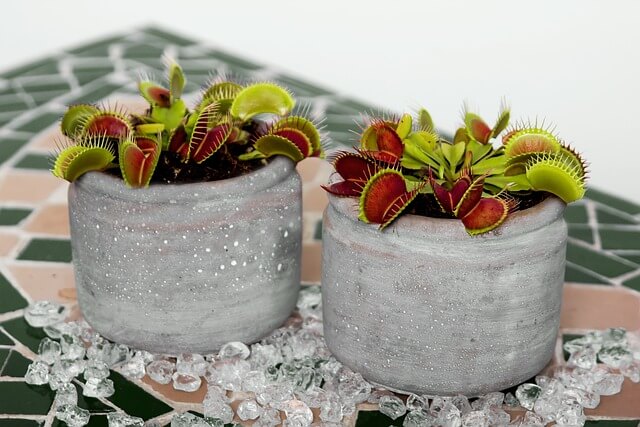
Are they animals, or are they plants? Indeed, the Venus fly trap is an intriguing example of meat-eating plant life.
Fly-eating plants look cool around the house and are an effective way of catching and killing flies around your home. However, the plant takes a while to digest a fly, so I recommend getting a couple of plants around your more fly-prone rooms.
5. Insect-o-cutors
One of the most effective ways to catch flies is with an insectocutor, which contains a light that flies find irresistible. It’s a quick electric shock, so there’s no real suffering, but these little electric traps offer an ongoing approach to catching and killing houseflies.
6. Spray the flies away
Fly sprays are widely available and aggressive enough to kill most house flies quickly. However, be careful using fly sprays around food, pets, and children.
We’re not a big fan of these harsh chemical approaches — opting for natural remedies whenever we can — but they are definitely effective.
The life cycle of a house fly
How long does a fly live? And can you beat their reproduction cycle?
Well, house flies are relatively short-lived, with a typical lifespan of around a month. But, each female lays as many as one-thousand eggs, which hatch into larvae in just a few hours.
Pupation takes a few days to a week, during which time the pupa evolves into what we recognise as a fly -reaching maturity within two weeks. They can live for another three weeks after that.
So, while the life cycle is relatively short, they reproduce rapidly. So, it’s wise to tackle a fly problem as soon as you spot it, aiming to break the reproductive cycle.
What types of flies are there?
There are more than 7000 fly species in the UK. And while we might be grossed out at the thought, take a moment to consider the essential role flies play in the decomposition process. Sure, they’re scavengers that feed off our waste products, but — actually — that’s a precious environmental role.
Without flies, the world would be full of rotting organic matter and dead animal carcasses. So, while they’re annoying and pose a health hazard, the world would be a much more unpleasant place without them.
These are the most common species found in the UK.
Housefly
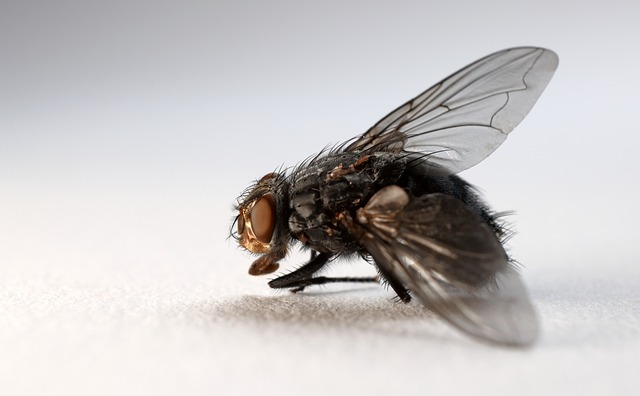
The common house fly is around 6-7mm in length and greyish. They feed on rotting food waste, on which they lay their eggs.
Bluebottle
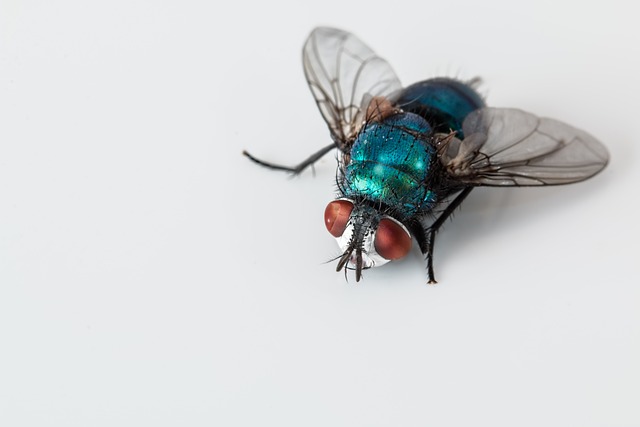
The bluebottle is actually a rather fascinating colour — pearlescent and shiny in metallic blue. At 10-14mm in length, bluebottles are typically twice the size of a housefly. They’re attracted more to meat and decaying organic materials, but they also eat other waste products, including faeces, which is why they pose such a health hazard around the home.
These larger flies have a very distinctive, loud buzz when they fly. It’s definitely a pest you want to deal with promptly.
Stable fly
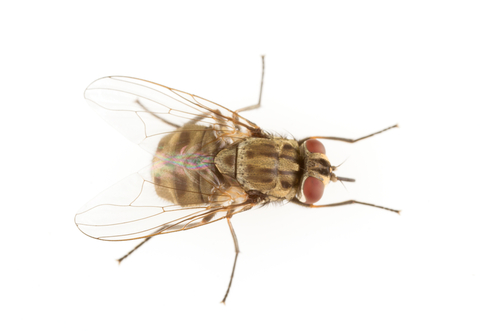
Stable flies have a slim, dark-coloured body. They feed on manure, which is where they also lay their eggs — so there’s a risk of inviting a stable fly population into your garden when you use fresh manure for your roses.
The stable fly looks similar to the housefly, but they have a vicious bite, which is extremely painful. They’re persistent little critters as well, resisting swatting and stamping.
However, as the name suggests, stable flies are typically found on farms and stables, so it’s not that common to find them around a suburban home.
Horsefly
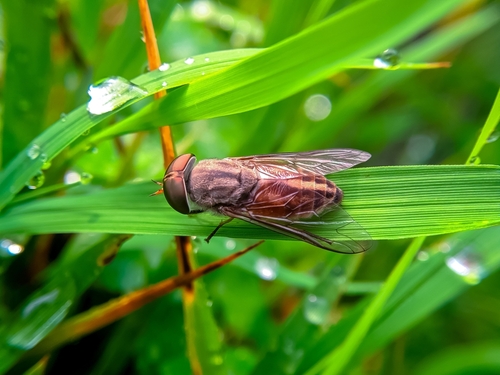
The horsefly also has a rather nasty bite. They make a slicing action with a pair of cutting blades in front of their mouth, which can slice through flesh. Ouch! And yuck!
A horsefly bite is excruciating and results in a red, itchy hive or rash, which can — in some cases — even cause dizziness!
Fortunately, it’s uncommon to find a horsefly around the home in suburban towns and cities. If you live in the countryside, however, the risk of being bitten is much higher.
Fruitfly
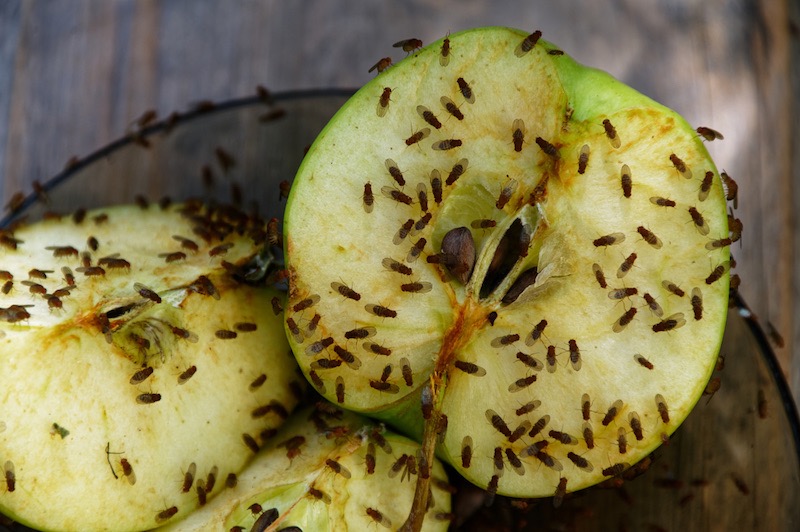
These tiny little insects are — perhaps — the most annoying flying insects we get in the home. They reproduce at lightning speed and are often challenging to catch and stamp out.
We’ve dedicated a special article about how to eradicate fruitflies, so if you’re experiencing a fruitfly pandemic, find out how to stamp them out.
Grassfly
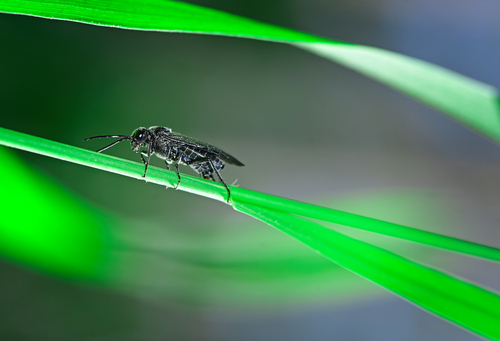
Frit flies (aka grass flies) — as the name suggests — are often found in grassland areas, including your lawn. These tiny flies are typically yellow or black and are often in flight during and after you mow your lawn.
Grassflies aren’t harmful to humans, but they will damage your lawn because their larvae eat through grass stems, leaving your grass looking yellow and damaged.
Cluster flies

These flies can be quite a challenge because — again, as their name suggests — they form large clusters consisting of thousands during the autumn when they’re looking for a place to hibernate.
Catching these flies can be tricky — a sticky fly trap or an insectocutor is probably the best approach.
How do you prevent a fly infestation?
There are several practical measures you can take to eradicate a fly infestation.
Keep your home clean by removing uneaten waste from table tops and kitchen surfaces.
Cover your windows with mosquito netting, and go all 1970s with a fly curtain over doorways if they’re often left open. You can get some really funky designs these days — it’s not all PVC strips that stick to your skin on a hot day like they did back in the day.
Finally, ensure there’s no stagnant water around the home — this is a breeding ground for flies. So, change pet water regularly and avoid leaving glasses of water in unused rooms.
FAQs
Creating a strong airflow through your home can drive flies away. Use an electric fan by open windows, discouraging flies from entering as they dislike strong gusts. Alternatively, use strong scents, such as citrus or lavender, around the home.
It’s simple to make a fly trap with an empty soda bottle. Cut off the top, turn it upside down, and push it into the body of the bottle (spout facing downwards). Pour a little sugary water into the bottle, as well as some vinegar, which will kill the flies.
You don’t need to reach for your expensive balsamic to kill a fly infestation. Just use a basic cleaning vinegar or a cheap brand you might put on your chips. Place the vinegar in a bowl with some water, and you’ll find that it attracts and kills houseflies.
Any questions?
I hope you’ve got all the info you could possibly need regarding how to get rid of flies. But if you have any questions, get in touch.
Alternatively, explore our comprehensive Help & Advice section for all your gardening and lawn care needs.
Thanks for reading!
-
Orchids: A Complete Guide on How to Care for ThemWant to give your orchid the best possible care? Discover essential tips from placement to watering and pruning. Learn everything you need to know!Read more
-
Growing Wisteria Made Simple: From Planting to Perfect BloomsWith blossoms like a purple waterfall, Wisteria sets an almost magical and colourful mood. If you want to grow this beauty in your garden, you’ll need a bit of patience. Don’t worry, it will most definitely pay off.Read more
-
How to Build a DIY Greenhouse: A Practical Guide for Smart SpendersImagine extending your growing season throughout the year, nurturing tender plants regardless of the weather, and creating a personal garden sanctuary. This is precisely what a DIY greenhouse offers you. Let’s learn how to build one.Read more
-
How to Grow Eucalyptus in British GardensWith a little love and care, eucalyptus trees can thrive in English gardens. Since they don’t germinate well without proper help, there are not considered invasive. So, there is no reason not to plant them if you enjoy their looks.Read more
-
Transform Your Garden with All-Year-Round Flowering PlantsDid you know you can enjoy blooming flowers even in January? With the right selection of all year round plants, there’s no need to wait until spring to add some colour to your garden.Read more
-
How to Create a Butterfly Garden: A Simple Guide for British GardensThe UK's butterfly population includes 59 different species. These beautiful winged creatures face a steady decline because of habitat loss, pollution and changing weather patterns. Your garden can become a vital link between nature reserves and natural habitats. Let’s explore how.Read more
-
Volcanic Rock Dust for Your Garden—Application and TipsDid you know that volcanic rock dust is a brilliant organic soil improver? This article explains exactly what it's good for and how to use it properly.Read more
-
How to Use Landscape Fabric ProperlyIf weeds or erosion in your garden are troubling you, landscape fabric might be the solution. We’ll explain how and when to use it properly, just keep on reading.Read more
Leave a comment
Your answer will be displayed on the site and the interested party will be notified by email.
Leave a comment
Have a question or want to share your experience? Leave us a comment.

- Order by 2PM = shipped today
- 250.000+ satisfied customers!
- 60 day satisfaction guarantee

- Order by 2PM = shipped today
- 250.000+ satisfied customers!
- 60 day satisfaction guarantee

🌱 All important maintenance moments for your lawn during the year. Leave your email and we will send you the lawn calendar for free.
Enter your email
Receive the lawn calendar in the mail
Enjoy a green lawn all year round!






















Comments (0)
There are no comments yet. Well then, what are you waiting for to
Be the first to write your comment!inaugurate this pretty page?
Do you have some comments?